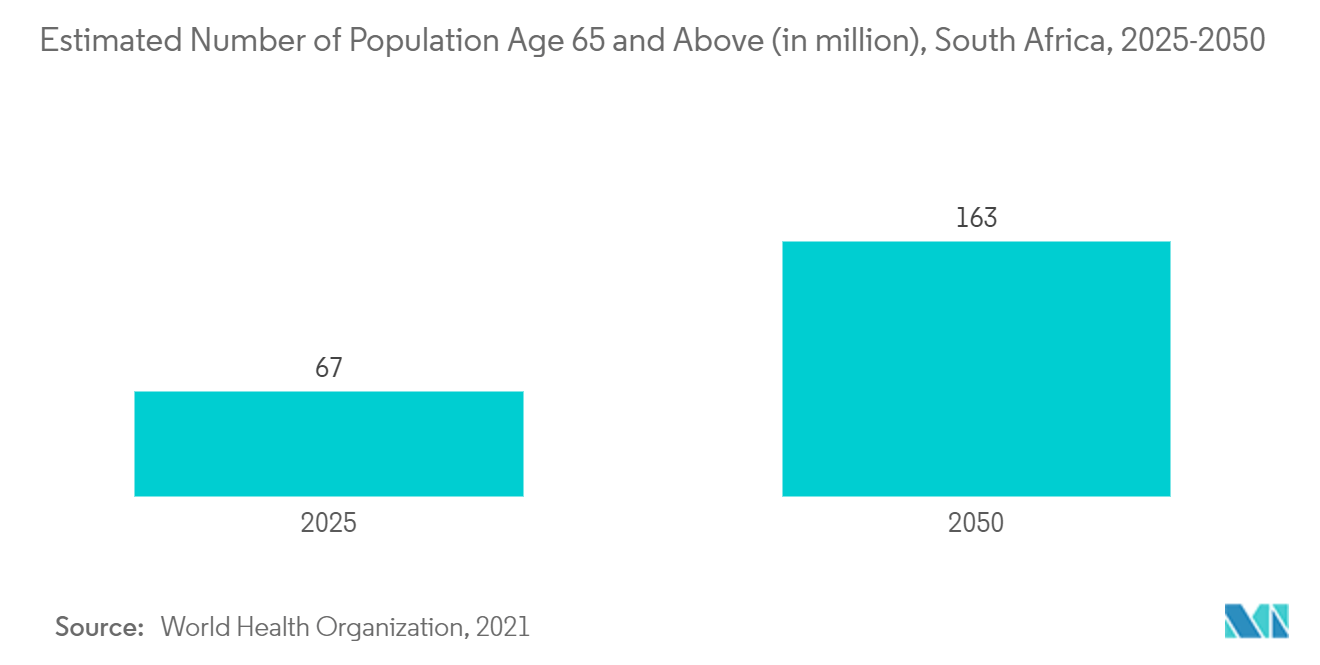Market Trends of Middle-East & Africa Cardiac Arrhythmia Monitoring Devices Industry
Continuous Rhythm Monitoring Devices Segment Expected to Hold Significant Market Share over the Forecast Period
- Continuous rhythm monitoring devices allow continuous heartbeat monitoring of daily activities. The device registers each heartbeat and sends the information to a live monitor. Certified cardiac technicians, available 24 hours a day, analyze each transmission, respond to events that need immediate attention, and transmit diagnostic reports to the doctors. The rising prevalence of cardiac arrhythmia risks such as obesity, old age, and various other factors accounts for the development of the studied segment.
- For instance, according to the World Obesity Atlas report in 2022, the overall prevalence of obesity among women by 2030 was estimated to be 50%, while in men, by 37% in UAE. Obesity is a severe health issue beyond just being an aesthetic concern.
- Research shows it is closely related to several illnesses, including type 2 diabetes, sleep disorders, high blood pressure, and cholesterol, all linked to cardiac arrhythmia. Hence, increased risk factor such as obesity leading to cardiac arrhythmia is expected to increase the demand for continuous rhythm monitoring devices, thereby driving the segment growth.
- Various strategies adopted by the key market players, such as promotion, acquisition, and collaboration, support segment growth over the forecast period. For instance, in June 2021, Cardiac Insight, Inc. launched its Cardea SOLO ECG System at Arab Health 2021, the largest healthcare exhibition in the Middle East. Cardea SOLO combines a single-use, patient-friendly wearable ECG sensor with 100% in-clinic automated software managed by clinicians, the only solution. The Cardea SOLO, with its proven arrhythmia analysis technology, includes comprehensive report generation and clinical editing tools for the entire disclosure of data, creating efficiencies and reducing processing time for clinicians. Thus, the abovementioned factors are expected to contribute to segmental growth over the forecast period.

GCC is Expected to hold a Significant Growth in the Studied Market Over the Forecast Period
- The Gulf Cooperation Council (GCC) comprises six countries Saudi Arabia, Kuwait, Bahrain, Qatar, the United Arab Emirates (UAE), and Oman. Factors such as the growing burden of diseases in these countries, product launches, and strategic initiatives by market players will drive the studied market growth.
- Also, countries like UAE and Saudi Arabia are investing heavily in healthcare infrastructure, which is expected to impact the market positively. The prevalence of heart disease and the risk factor associated with cardiac arrhythmias, such as obesity and old age among the population, is expected to drive the demand for cardiac arrhythmia monitoring devices, thereby contributing to the growth of the studied segment.
- For instance, in the article by Khaleej Times in November 2022, every year in the UAE, around 8,000 to 10,000 patients suffer from a stroke, equating to about one patient every hour. Such a high frequency of heart diseases is expected to fuel the demand for cardiac arrhythmia monitoring devices, thereby boosting segment growth.
- Also, the launch of various awareness campaigns for atrial fibrillation among the population is expected to contribute to the growth of the studied segment.
- For instance, in October 2022, FibriCheck partnered with Pfizer and Altibbi and launched an awareness campaign to detect atrial fibrillation in the United Arab Emirates. Such awareness campaigns are expected to drive the demand for cardiac arrhythmia monitoring devices to reduce the diagnosis of the incidence of cardiac arrhythmia at early stages, thereby contributing to the growth of the market. Thus, all factors above are expected to boost the GCC's cardiac arrhythmia monitoring devices market over the forecast period.



